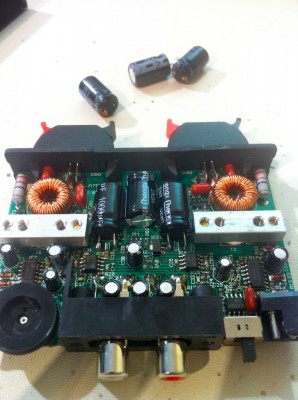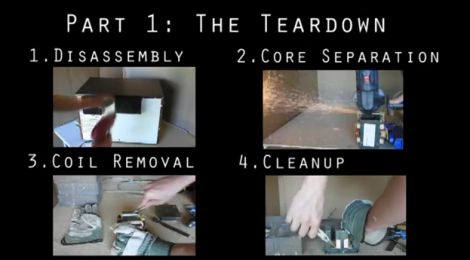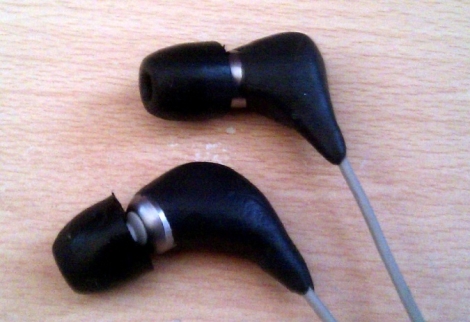
[Quinn Dunki] is adding wireless audio to all of the rooms in her home. She’s going with Airplay, snatching up used or refurbished Airport Express units because of their ability to work with both her existing WiFi and the Airplay protocol. The last piece in the puzzle is to get an Amp and she chose the small unit seen above. The problem is that it was dead on arrival and she couldn’t get the company to respond to her issue. So she cracked it open and fixed it right up.
The offenders are the three electrolytic capacitors at the top of the picture. She took some close-up images of each and you can’t miss the fact that they’re blown out. These are often among the higher price-per-unit parts and manufactures try to pinch the penny as much as possible. Add to it the heat in a small enclosure like this one and you’ve got a failure. [Quinn] dug through her junk bin but the size of the replacement had to be a perfect match so she ended up putting in a parts order. The new caps fit and work perfectly as you can hear in the clip after the break.
Continue reading “[Quinn] Resurrects An Amplifier That Experienced Death-by-capacitor”
















